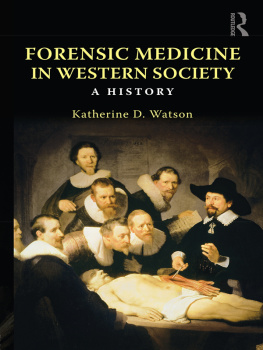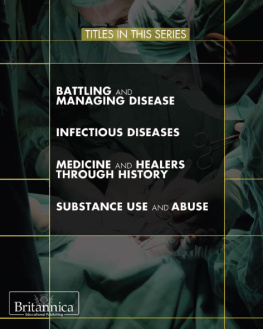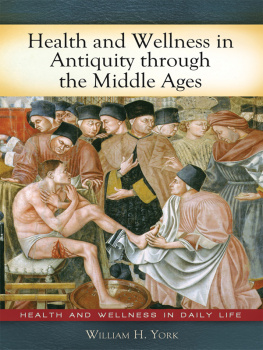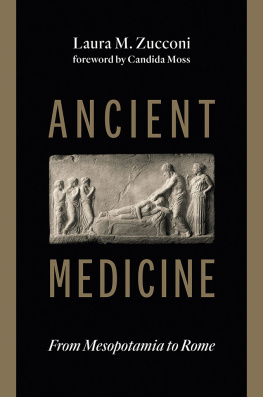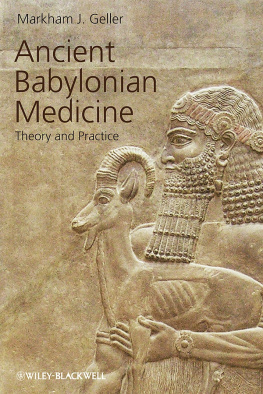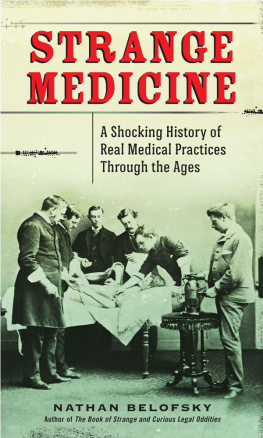History of Medicine
ABOUT THE EDITOR
Rebecca Greene, PhD, is a founding member of The Institute for Research in History. She earned her doctorate degree in History at Columbia University, and has held teaching positions at Colgate University, Lehman College, and the University of Maryland. Dr. Greene received a grant from the National Institutes of Health History of Medicine Program and is a Josia H. Macy Fellow in the History of Psychiatry at Cornell Medical Center.
First published by The Haworth Press, Inc.
10 Alice Street, Binghamton, N Y 13904-1580
This edition published 2012 by Routledge
| Routledge | Routledge |
| Taylor & Francis Group | Taylor & Francis Group |
| 711 Third Avenue | 2 Park Square, Milton Park |
| New York, NY 100l7 | Abingdon, Oxon OX14 4RN |
Trends in History, Volume 4, Numbers 2/3 1988.
Trends in History is a thematic journal copublished by The Institute for Research in History and by The Haworth Press.
The Institute for Research in History published Volume I, Numbers 1 and 2 of Trends in History in 1979. The Institute for Research in History and The Haworth Press copublished Volumes 2 and 3 on the following schedule: 2( 1) Fall 1981, 2(2) Winter 1981, 2(3) Spring 1982, 2(4) Summer 1982 3(1) Fall 1982,3(2) Winter 1982, and 3(3/4) Spring/Summer 1983.
Articles appearing in this serial arc annotated and indexed in Historical Abstracts and America: History and Life.
EDITORIAL OFFICE. All letters to the Editor and inquiries regarding manuscript submissions should be directed to The Institute for Research in History, 1133 Broadway, Room 923, New York, NY 10010.
BUSINESS OFFICE: Except for overseas sales representatives, all subscriptions and advertising inquiries should be directed to The Haworth Press, Inc., 12 West 32 Street, New York, NY 10001. Telephone (212) 279-1200.
SUBSCRIPTIONS arc on an academic year, per volume basis only. Except for overseas sales representatives, payment must be made in U.S. or Canadian funds only. Except for sales representatives, the following prices are (for the current volume only): $32.00 individuals, $58.00 institutions, and $83.00 libraries. Postage and handling: U.S. orders, add $2.00; Canadian/Mexican orders, add $7.00. If paying by Canadian check or money order, add current exchange rate to U.S. dollar amounts shown above to list prices alld postage and handling charges. Back voillmes are available. Please add 20% to current subscription rate plus postage and handling.
CHANGE OF ADDRESS: Please notify the Subscription Department, The Haworth Press, Inc., 75 Griswold Street, Binghamton, New York 13904 of address changes. Please allow six weeks for processing; include old and new addresses as well as hoth zip codes.
Copyright 1988 by The Haworth Press, Inc. All rights reserved. Copies of articles in this journal may be noncommercially reproduced for the purpose of educational or scientific advancement. Otherwise, no part of this work may he reproduced or utilized in any form or hy any means, electronic or mechanical, including photocopying, microfilm and recording, or by any information storage and retrieval system, without permission in writing from the publisher.
ISBN 0-86656-309-1 (hard: alk paper)
History of Medicine
Trends in History
Volume 4, Numbers 2/3
CONTENTS
Rebecca Greene
John Scarborough
Faye M. Getz
Robert I. Goler
Esther Katz
Gerald Oppenheimer
GUEST EDITOR
REBECCA GREENE
EDITOR
WILLIAM ZEISEL
BOARD OF EDITORS
HELENE AHRWEILER, University of Paris
MILDRED ALPERN, Spring Valley Senior High School, New York; Institute for Research in History
ANTHONY BRYER, University of Birmingham, England
ROBERT IGNATIUS BURNS, S. J., University of California, Los Angeles
BARBARA CUNNINGHAM, The Alternative School, Teaneck, New Jersey
NATALIE ZEMON DAVIS, Princeton University
WALTER GOFFART, University of Toronto
NANCY HENNINGSEN, Packer Collegiate School, New York City; Institute for Research in History
JO ANN McNAMARA, Hunter College, City University of New York; Institute for Research in History
ANDRZEJ POPPE, University of Warsaw
ARTHUR SCHLESINGER, JR., Graduate School, City University of New York
GILBERT SCHMERLER, The New Lincoln School, New York City
WILLIAM SINNIGEN, Hunter College, City University of New York
The Institute for Research in History is an independent community of scholars engaged in historical research, writing, and discussion. It is a non-profit, tax-exempt corporation chartered in the State of New York.
CHAIR OF THE BOARD OF DIRECTORS
CAROL GRONEMAN
EXECUTIVE DIRECTOR
MARJORIE LIGHTMAN
Introduction
Rebecca Greene
Central to this volume on the history of medicine is the question of definition. Is the history of medicine a compendium of translated texts and treatises in medicine; the study of the extent to which current medical practices or previously unknown practices existed in the past; or of disease in former times? Does it inquire into the development of medicine from the perspective of how ideas transformed logically over time? Does it examine the effects of society on medicine or of medicine on society? Does it trace transformations in the medical and allied professions, or differentiate between the medical treatment of men and women over time?
These questions are addressed wisely and energetically by the authors of this volume.
The volume begins with John Scarboroughs essay, Classical Antiquity: Medicine and Allied Sciences. In an unusually comprehensive fashion, Scarborough covers the texts, translations, biographies, journal articles on Greek, Hellenistic, and Byzantine medicine, surgery, pharmacology, and veterinary medicine. Scarborough reviews the philosophy of medicine in ancient Greece (such as the concept of humors) and the various Greek schools of medical thought. Among the medical leaders covered by Scarborough are Hippocrates of Greece and Galen of Rome. Referring to the literature on human anatomy and dissection in Hellenistic Greece, Scarborough asks the question: Why did the practice of dissection appear and end so abruptly, why was there no systematic dissection of cadavers after 220 B.C.? Belying the notion that the Byzantine PeriodA.D. 337 to 1453was a Dark Age for medicine, Scarborough notes the literature which traces the theory of the circulation of the blood to as early as the 10th century.
In Western Medieval Medicine, Faye M. Getz examines the extent to which scholars have located current, known diseases and their medical treatments in the Middle Ages while ignoring their historical context. Getz refers to the serious treatment of the passions of the martyrs as evidence of neuropathological afflictions, compared to a treatment of their behavior as reflective of the religiosity of the time; she also notes the examination by scholars of the extent to which leprosy and the black death of the Middle Ages had the same characteristics as modern leprosy and bubonic plague. Getz rightly observes that some scholars, while dwelling on how modern medical treatments and diagnoses can be employed in the interpretation of the past, have ignored the treatments and diagnoses then common but today no longer considered valid, or have failed to investigate why these forgotten techniques were then so popular. On the other hand, Getz acknowledges that historians of medicine have viewed medicine from a social historical perspective, for example, referring to the social impact of the black death on medieval prophecy and concepts on the millennium. The essay briefly refers to the literature on the regulation of medicine by the Church in the Middle Ages, and ends by asking if there was a womens medicine created by and for women in the Middle Ages.



